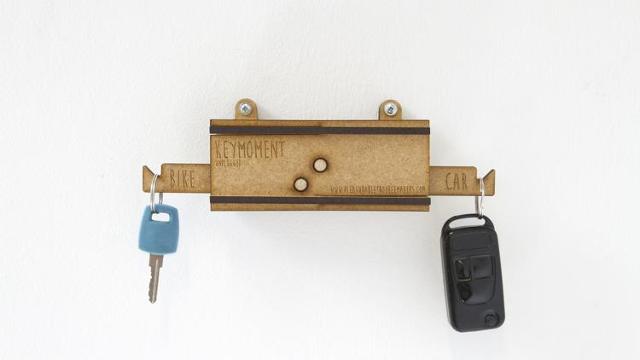Don’t Relax: Uncomfortability Is The New Convenience
To stop humanity from turning into useless, pleasure-seeking blobs, some designers are abandoning the quest to make everything easy, and introducing a little extra difficulty into our lives.
When you step into the “Intervator“—a hacked elevator in Essen, Germany—and push a button for the fifth floor, the elevator sends you to the fourth floor instead, and tells you to take a flight of stairs for a little exercise.
“It’s about how you can implement a new behavior in your daily life—something extra,” says Matthias Laschke, a PhD student at Germany’s Folkwang University of the Arts, who works with a team of students designing simple interventions like the hacked elevator control panel.
“If you come to me and say you want to exercise more, I can say, ‘Go for a jog’ or something,” Laschke explains. “But you’d need self-regulation to get off the couch, you’d need extra time, and you’d have to think about how you wanted to increase physical activity. If you have something like the Intervator at work, you can easily add a little bit of activity to daily life.”
Most people, the designers found, wouldn’t take the elevator if they needed to go up a single floor, so the intervention is a simple extension of what people might do anyway. It’s also a way to help introduce the idea of a new habit. “After a while, you might have this idea of always going one floor under the floor you need to go, even on a different elevator,” Laschke says.
The intervention is one example of a growing body of products designed to nudge us to make better choices in the moment, even if that choice is slightly more uncomfortable.
Laschke calls his team’s designs “pleasurable troublemakers”—they’re often a little ironic, funny, forgiving, and not quite so annoying that you’ll stop using them. They’re also easy to cheat: On the elevator, for example, if you really don’t want to walk up the stairs, or can’t, you can always push the button for the next-highest floor. There’s always a choice.
“I think it’s inhuman to force people to do something,” Laschke says. “I also think people are too smart. When they figure out this system wants something they do not want to do, after a while I think they would stop using it. That’s why this system is designed for you to cheat.” (Other designers go a little farther to make behavior change automatic—like the startup that steals money from your bank account to help you save).

For another design, Laschke created a key rack that holds both a bike key and a car key; if you choose the car key, the bike key drops to the ground, forcing you to pick it up and reconsider your decision. A lamp slowly closes its shade to make you think about energy use—to keep the light on, you have to keep touching it. A system designed for cars plays the sound of children playing every time you drive by a school, to remind drivers to slow down.
Other designers are working on similar approaches to behavior change. A new stool is designed to wobble slightly as you sit at work, forcing you to pay attention to your posture and keep your legs active. A new desk lamp turns on only if you put your smartphone inside, helping you curb your addiction to texting.
Unlike more traditional attempts at behavior change, like antismoking ads, or even something like wearing a Fitbit, these interventions all work at the moment of choice.
“Quantified self technologies are just about information,” says Laschke. “It might tell you the number of steps taken or calories burned, but it doesn’t help you in the situation to behave differently. When you’re sitting on the couch, it’s still comfortable to watch TV.”
If we don’t have the willpower to get off of the couch, we may soon have a couch designed to physically kick us off. Wearables, too, will start to offer more suggestions at the moment when they’re most useful.
“A smartwatch could say, ‘Now you’re at the train station, I know you want to use the train, but why not walk?'” Laschke says. “While walking, the watch could also tell you to walk faster, and give you a beat to walk to. It’s about presenting an alternative in a particular situation.”
As these products evolve, we’ll still have to make choices: candy or fruit, car or bike, elevator or stairs. But better design can help the friction start to dissolve between the choices we want to make and the choices we might have made in the past.
Source(s):